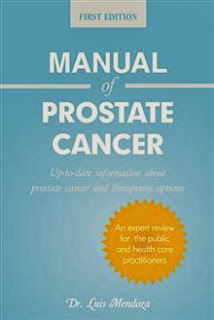In a large new study of older Americans,
researchers find that people with the healthiest eating habits are about 15
percent less likely to develop pancreatic cancer than those with the poorest
diets.
In the analysis of data on more than 500,000
Americans over age 50, men in particular, especially those who were overweight
or obese, appeared to benefit most from a high quality diet.
"It is important to note that our findings are
based on overall diet and not individual foods. A combination of many foods
contributed to the observed association between greater compliance with the
Dietary Guidelines and lower risk of pancreatic cancer," lead author
Hannah Arem of the National Cancer Institute in Bethesda, Maryland, told
Reuters Health in an email.
Though pancreatic cancer is rare - about 1.5
percent of Americans will develop the disease during their lifetimes - it is
one of the most aggressive and lethal cancers. Only about six percent of people
with pancreatic cancer are still alive five years after diagnosis, according to
Arem.
Past studies looking at the relationship between
diet and risk for pancreatic cancer have tended to focus on individual foods
and found few connections, according to her team's report, published in the
Journal of the National Cancer Institute.
To examine links between overall diet and cancer
risk, Arem and her colleagues used the government-designed Healthy Eating Index
published in 2005 (HEI-2005) as a basis for rating the overall quality of
people's diets.
They applied those criteria to responses from
537,218 men and women who were part of the American Association for Retired
Persons Diet and Health Study. Between 1995 and 1996, participants filled out
diet questionnaires about how often they ate items on a list of 124 foods.
Arem's team then divided participants into five
groups based on how closely their diets met HEI-2005 recommendations for
consuming healthy foods such as fruits, vegetables and whole grains and limiting unhealthy ones, like red meat and
junk foods.
Scores on the index range from 0 (no guidelines
met) to 100 (all guidelines met), with high scores indicating the healthiest
eating patterns.
Using state cancer registries and Social Security
Administration data, the researchers followed participants for about 10 years
and found that 2,383 people developed pancreatic cancer.
About 22 percent of the pancreatic cancer cases
were among people with the lowest HEI-2005 scores, while 19 percent were in
people with the highest scores. Overall, that translates to a 15 percent lower
risk among those with the healthiest diets.
Among men who were overweight or obese, however,
those with healthy eating scores in the top-fifth group were 28 percent less
likely than their counterparts in the bottom-fifth to develop pancreatic
cancer. The same effect was not seen among overweight women.
When the researchers adjusted for other factors
linked to pancreatic cancer risk, including smoking, alcohol consumption and
diabetes, the effects of diet quality remained the same.
Arem's team also looked at specific subgroups of
foods and found that people who ate the greatest amounts of certain healthy
foods, such as dark-green and orange vegetables, legumes, whole grains and low-fat milk had lowered risk for pancreatic
cancer.
The researchers point out in their report, though,
that other recent reviews of the literature have not found similar results for
people who ate lots of fruits and vegetables, for example.
"Our study showed an association between diet
and pancreatic cancer risk, rather than cause and effect. In general,
maintaining a healthy diet has many health benefits," Arem said.
Dr. Rachel Ballard-Barbash, also of the National
Cancer Institute, and her colleagues also note in an editorial accompanying the
new study that attempts to link individual foods or nutrients to cancer risk
have yielded conflicting results.
While some understanding about the relationship
between diet and certain cancers has been gained, that "knowledge has not
yet translated into noticeable reductions in the incidence of the major cancers
with diet-related etiology," they write.
Dr. Alfred Neugut, who studies digestive cancers
and epidemiology but was not involved in the current research, agreed there are
still a lot of unknowns about the links between diet and cancer.
"If you go out of your way to have a healthy
diet, then you're probably going out of your way to be healthy in other
ways," Neugut, a professor of medicine at Columbia Presbyterian Medical
Center in New York, told Reuters Health. So it's difficult to tease out whether
it's really the diet alone that explains the decreased risk seen in the new
study.
"It's always safe to say that it's prudent to
eat a healthy diet," he said. But, he added, "I would say that diet
and cancer is a topic that, despite huge numbers of studies and huge amounts of
money invested, has eluded any dramatic findings."




